Learning how to make pottery can be a rewarding journey that allows you to explore your creativity while crafting functional and decorative pieces from clay. Whether you’re a beginner looking to set up a home studio or a seasoned artist exploring new techniques, understanding the basic steps and materials involved is crucial. From selecting the right clay type—earthenware, stoneware, or porcelain—to mastering various pottery-making techniques such as throwing, coiling, and pinching, there’s a lot to learn. Equally important is acquiring the right tools, like a pottery wheel and kiln, which are integral to the process of shaping and finishing your creations.
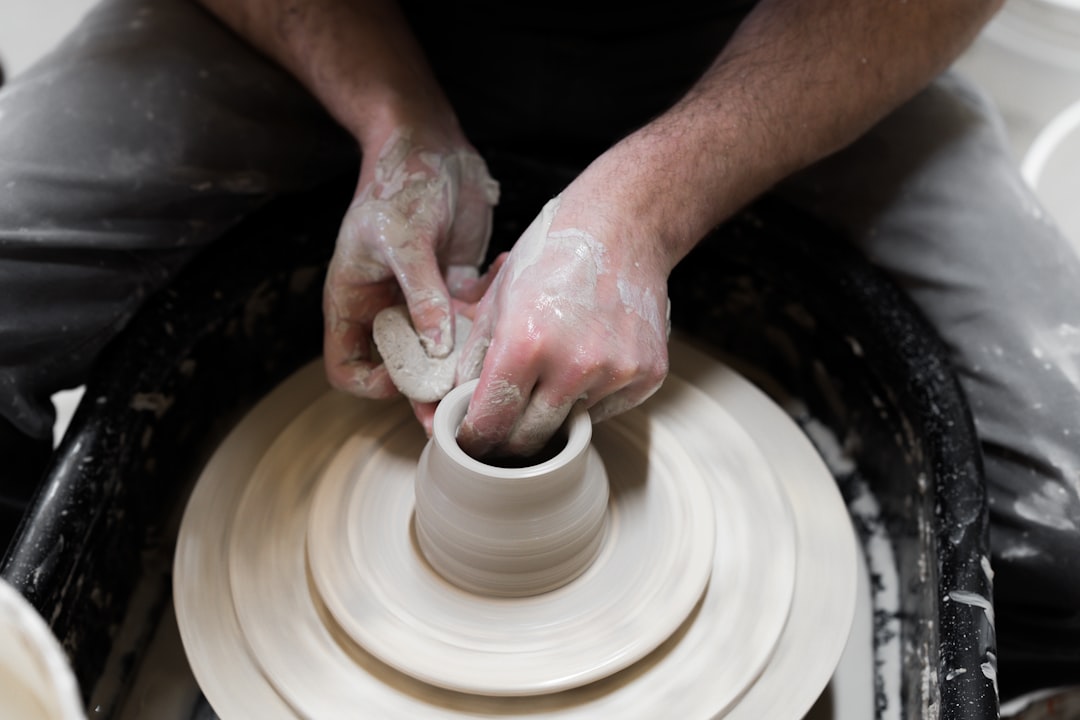
| Step | Description | Key Tools/Materials |
|---|---|---|
| 1. Setup Workspace | Designate an area with proper ventilation and gather necessary equipment. | Workspace area, ventilation, cleaning supplies |
| 2. Choose Clay Type | Select from earthenware, stoneware, or porcelain based on properties and uses. | Earthenware, Stoneware, Porcelain |
| 3. Throw Pottery | Use a pottery wheel to center and shape clay into symmetrical forms. | Pottery wheel, cut off wire, sponges |
| 4. Trim and Dry | Trim excess clay and prepare pieces for first firing. | Trimming tools, pin tools |
| 5. Bisque Fire | Initial firing to harden clay, making it ready for glazing. | Kiln |
| 6. Glaze and Glaze Fire | Apply glaze for color and texture, then fire to strengthen and waterproof. | Glazes, respirator mask, spray booth |
Choosing the Right Clay for Your Pottery Journey
Embarking on pottery-making begins with selecting the right clay to suit your projects. Each type of clay—earthenware, stoneware, or porcelain—comes with distinct properties and firing requirements. Earthenware is an affordable option but tends to be porous, making it less ideal for functional dinnerware. Stoneware, known for its durability, is perfect for items like mugs and plates that might go in the dishwasher. Porcelain, although pricier, offers a smooth finish and withstands high temperatures, adding elegance to both decorative and functional pieces.
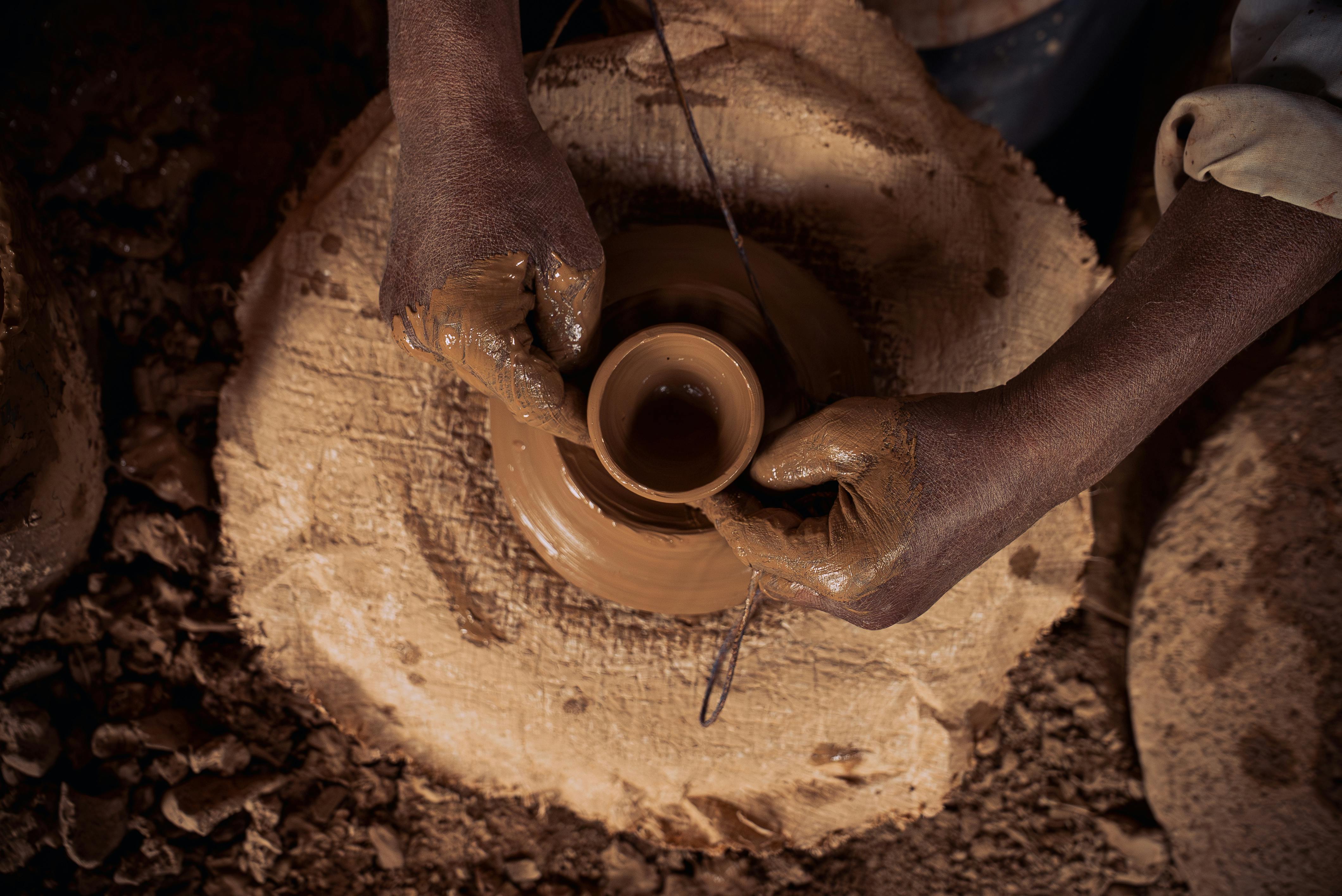
Setting Up Your Pottery Workspace
Creating a cozy corner for your pottery endeavors can turn the process into a joyful experience. A well-ventilated area with easy access to cleaning supplies sets the stage for a productive session. Consider the following essentials for your home studio:
- A sturdy, comfortable table for wedging and shaping your clay
- Electric or manual pottery wheel depending on your preference and space
- Shelves for drying your creations safely
- Proper protective gear like masks for dust and glaze work

Remember, investing in a reliable kiln is crucial. Electric kilns are often recommended for home studios thanks to their compact size and ease of use.
Mastering Pottery Techniques
Diving into pottery involves learning various techniques, each offering a unique approach to shaping clay. Throwing is a favorite among beginners and seasoned potters alike, where centering your clay on a spinning wheel creates potential for complex, symmetrical designs. For a comprehensive guide to starting your pottery journey, check out Pottery for Beginners: Essential Tools and Techniques.
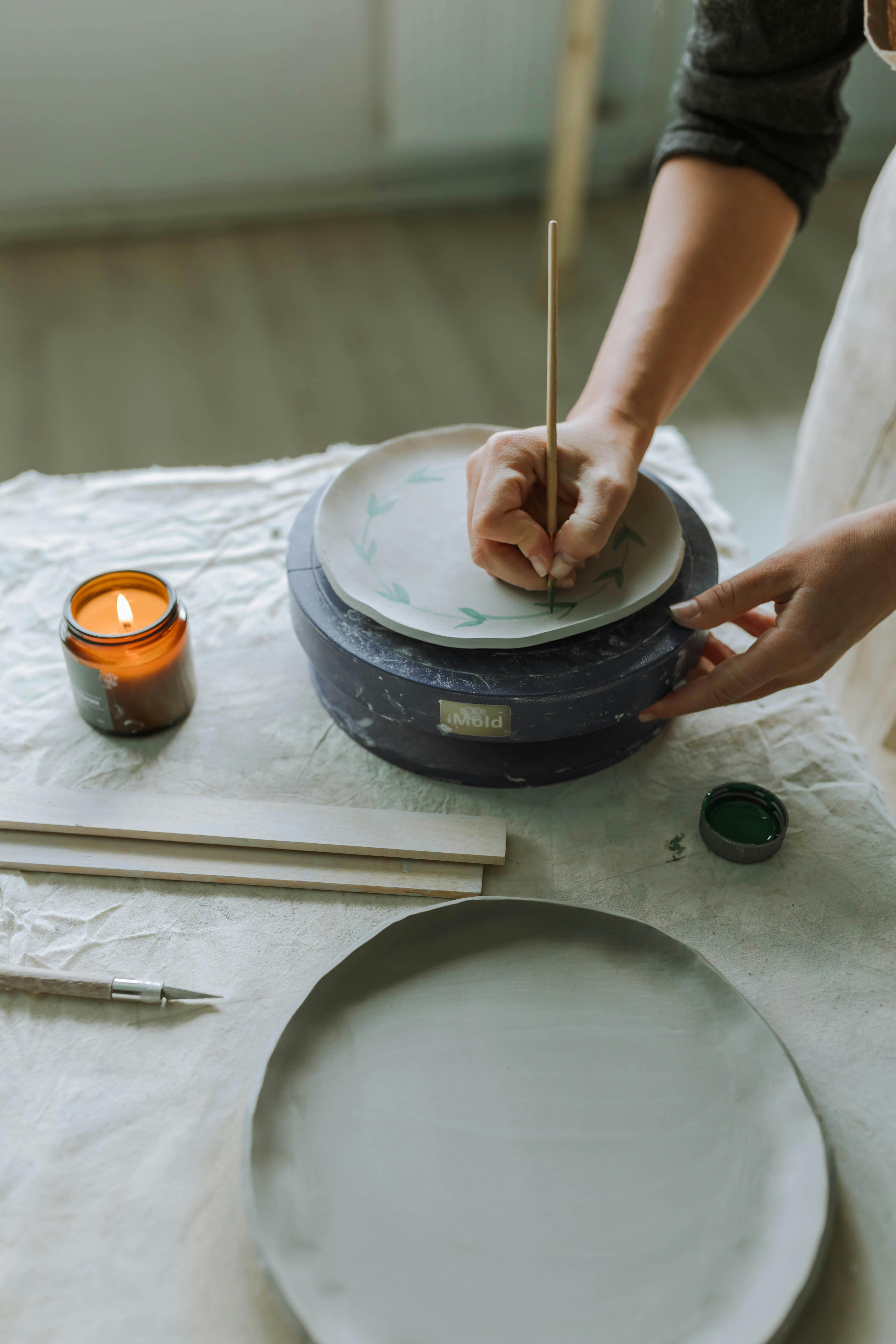
Meanwhile, coiling allows you to build forms by hand, perfect for experimenting with shapes that a wheel might not accommodate. Let’s not overlook the simplicity and satisfaction of creating a pinch pot, a technique ideal for novices testing their tactile skills. For those looking to refine their techniques further, Slam Clay: The Ultimate Guide to Mastering Pottery Techniques offers invaluable insights.
Preparing Your Pottery for Firing
Before sending your pottery into the kiln, trimming excess clay from your pieces ensures they are ready for the bisque firing stage. This first firing hardens the clay, making it ready for glazing. Trimming tools like pin and loop tools can help achieve a professional finish, smoothing any rough edges.
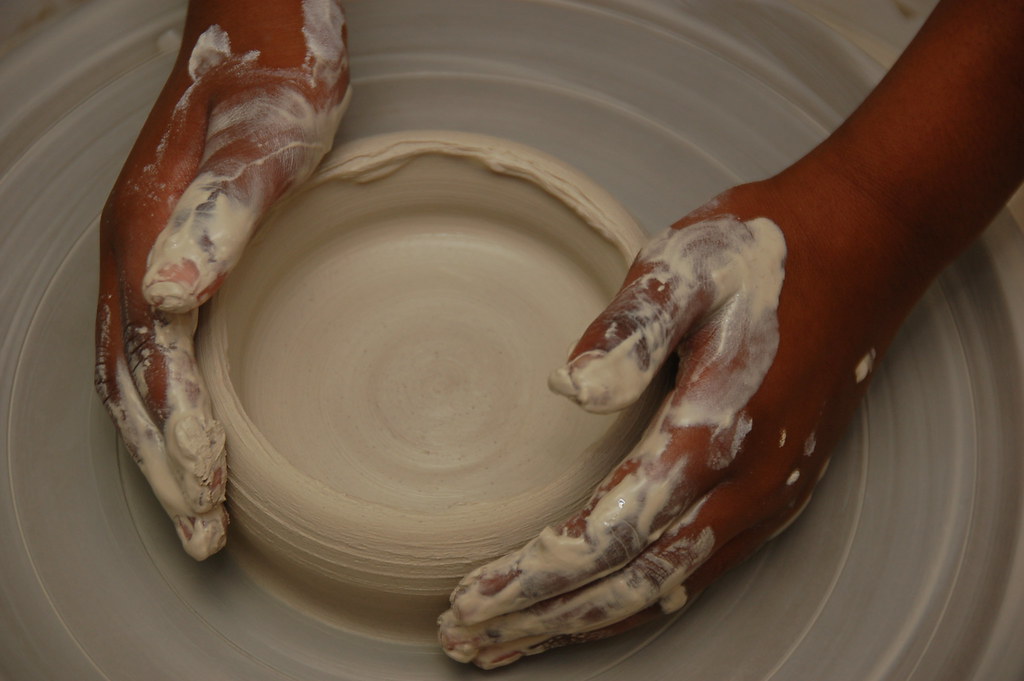
Adding personal touches during this stage brings your creations to life. Consider decorating with underglazes or using techniques like sgraffito to etch unique patterns into the clay. Just make sure your decorative work complements the type of glaze you plan to use later. Learn how to prepare different types of slip with How to Make Slip: Comprehensive Guide for All Clay Types.
The Art of Glazing and Glaze Firing
Applying glaze transforms your pottery not only aesthetically but functionally, as it waterproofs the surface. While ready-made powdered glazes offer a straightforward option, experimenting with custom glazes can be thrilling as you tailor colors and textures to your liking.
Glazing techniques like dipping, spraying, or brushing each provide different finishes, adding another layer to your creative expression. Make sure to fire your glazed pottery at the appropriate temperature; compatibility with the clay type is crucial for avoiding mishaps and achieving desirable results. Explore the innovative world of 3D printing in ceramics with the Ceramics Clay Slip 3D Printer: Revolutionizing Ceramic Art.
Ready to share your experiences or need to troubleshoot a pottery mishap? Drop a comment below, and let’s connect over the collective art of pottery! Your stories and tips are as valuable as the clay we shape. Discover more recent articles and connect with fellow pottery enthusiasts!
Pottery Wheel Kids Complete Painting
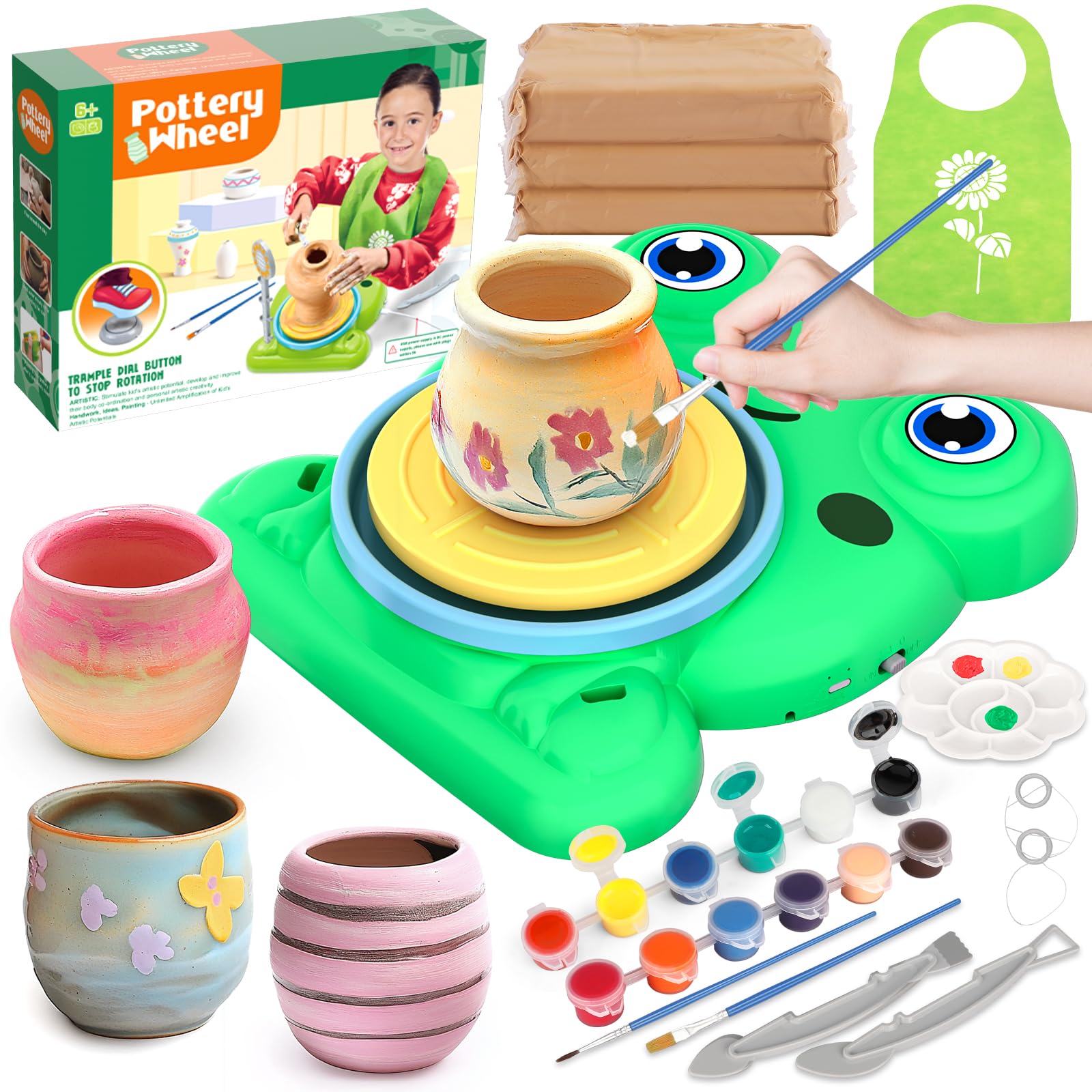
The KDNHVRQY K Type High Temperature Sensor Probe is a versatile and reliable tool designed for high-temperature applications. With a length of 150mm, this WRN-010 thermocouple can withstand temperatures up to 1300°C, making it ideal for use in muffle furnaces and electric kilns. Its precise temperature measurement capabilities ensure optimal performance in industrial environments.
Blisstime Sculpting Pottery Carving Handles

Discover the art of pottery with “Pottery: Techniques of Decoration” by John Colbeck. This invaluable book offers a treasure trove of techniques and in-depth descriptions for enhancing your pottery creations. Learn how to skillfully use color to craft striking agate ware and explore a variety of methods to turn your clay pieces into beautiful, decorative works of art. Perfect for both beginners and experienced potters seeking to expand their decorative skills.
Pottery Techniques Decoration John Colbeck

“Pottery: Techniques of Decoration” by John Colbeck delves into the intricate art of pottery decoration. This indispensable guide presents an array of techniques, from traditional to innovative methods, for enhancing your ceramic creations. Discover the secrets of creating stunning agate ware and other decorative finishes with expert descriptions and practical advice. Whether you’re a beginner or an experienced potter, this book is a valuable resource for mastering the art of pottery decoration.
How to Make Pottery | Kids Pottery Term Lesson
Learning how to make pottery can be a rewarding journey that allows you to explore your creativity while crafting functional and decorative pieces from clay. Whether you’re a beginner looking to set up a home studio or a seasoned artist exploring new techniques, this video from Createful Kids demonstrates the push and pinch methods used in pottery making.
What do you need to start making pottery?
If you’re new to pottery and looking to cover the essentials, start by gathering a beginner-friendly clay, a small ceramic kiln for firing, a simple pottery wheel for shaping, and some basic modeling tools. As you get more comfortable, you can expand your toolkit with specialized equipment for hand-building, wheel-throwing, or sculpting techniques. This gradual approach helps you learn at your own pace and invest in tools that match your growing skills.
What is the process of making pottery?
Pottery is the art of shaping clay—along with earthen minerals and water—into decorative or functional forms. First, you prepare and knead your clay, then shape it using methods like hand-building or wheel-throwing. Once your piece reaches a leather-hard stage, you fire it in a kiln (called a bisque firing) to remove moisture and solidify the form. For added color and durability, you can apply glazes before firing again at high temperatures. This sequence transforms raw clay into resilient ceramic pieces that can last for generations.
Is it cheaper to make your own pottery?
Investing in a kiln, a wheel, and quality tools can feel pricey upfront, but once you’ve spent time developing your technique, producing your own pottery often becomes more economical than buying finished pieces. Keep in mind, however, that materials like clay and glazes, along with energy costs for firing, add to your expenses. Ultimately, if you value the creativity, satisfaction, and uniqueness of handmade pottery, many find the rewards far outweigh the initial investments.
Embarking on the pottery-making journey opens up a world of creativity and tangible artistry. As you continue to shape clay into your unique designs, remember that practice and patience are key to honing your skills. Enjoy every step of the process, from kneading the clay to glazing your finished pieces, and take pride in the beautiful creations you bring to life.
Stay Connected and Inspired
If you’re eager to keep learning and stay inspired, be sure to follow us on Instagram. We regularly share tips, tutorials, and showcases of amazing pottery projects from our community. Let’s continue this creative journey together!
Leave a Reply
Venture into a world where clay and creativity converge at JJClayStudio.com – where every piece tells a story. Unearth your next treasure and become part of the narrative that turns everyday moments into artful experiences.
